All about the pennisetum
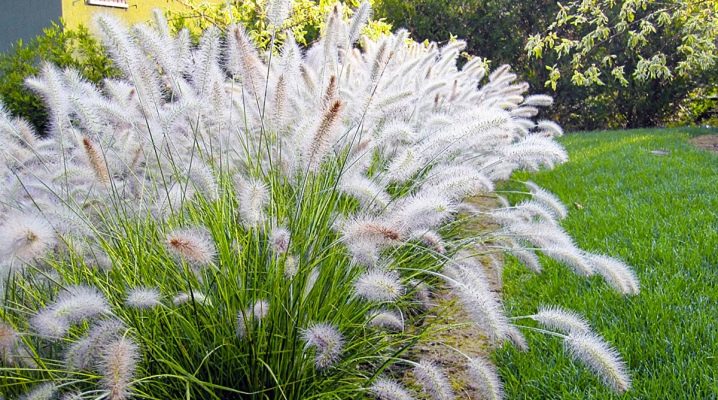
Pennisetum, or pinnate bristle, is a popular cereal crop in landscape design, used in framing paths and in creating complex multi-level compositions. Its types and varieties differ in the degree of frost resistance, decorativeness, but always deserve attention. Also, the plant is sometimes called fountain grass for the special shape of its paniculate inflorescences, reminiscent of gushing jets of water.
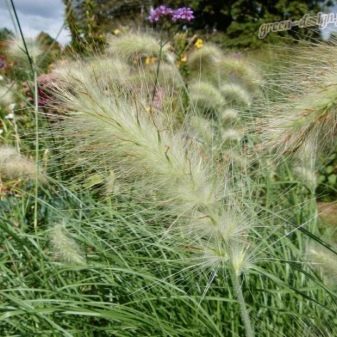
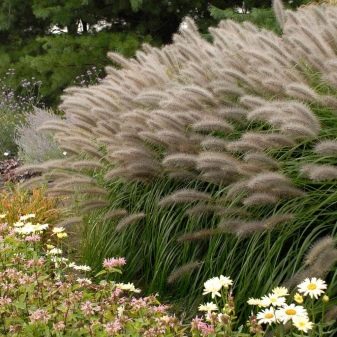
general description
Peristochaetum and pennisetum are one and the same plant. It is a herbaceous cereal with paniculate flowers, naturally occurring in tropical and warm temperate climates.
Pennisetum, depending on the species, can be an annual or perennial, the sizes of plants also vary from compact, up to half a meter high, to giant ones, with shoots of 8 meters each. Stems are straight, with narrow linear leaves. Inflorescences are spike-shaped panicles 30-250 mm long. The bristles in them can be covered with elongated hairs that look like feathers.
In total, this genus includes about 140 plant species. Most of them are weeds, suitable only as food for birds and insects.
Only African millet, used as a raw material for the preparation of cereals and flour, has a food purpose. Its grain is used in the production of alcohols and starch, live fermentation drinks.
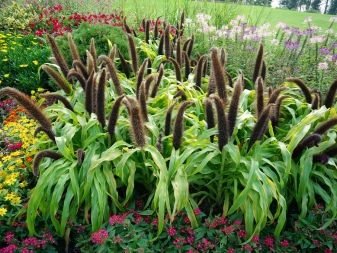
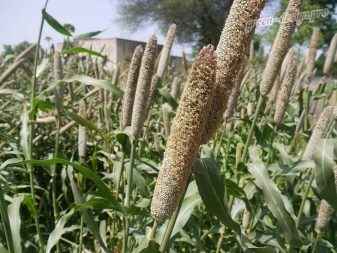
Spreading
The most diverse pennisetum is represented in the countries of Latin and North America, Asia and Africa. In the USA and Canada, European countries, plants are naturalized, but not so diverse. Also, pinnate bristles can be seen on the islands of the Pacific Ocean, in Australasia. Even on the territory of Antarctica there is 1 variety of this plant.


Popular species and varieties
Among the decorative cereals, the pennisetum stands out for its rather large size, lush and long flowering. The winter hardiness of species largely depends on their natural growing conditions. The most popular varieties and types are worth considering in more detail.
- Bristly... Forms curtains up to 130 cm high with lush panicles of pink and purple hues. In the north, this variety is grown exclusively as an annual. In the south, it is like a long-term culture. This is one of the most decorative subspecies. One of the varieties of such pennisetum, "Rubrum", is often used in mixed and individual plantings, as a basis for dry bouquets.

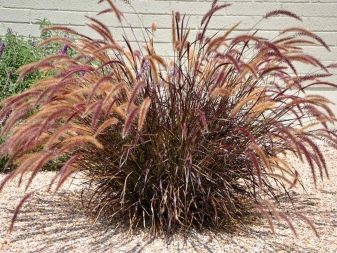
- Gray... A decorative variety with a very unusual bronze-burgundy color of the leaf plates. They are wide, up to 35 mm, the height of the plant is also significant, up to 2 m. It is this subspecies that is used to obtain African millet, in cold climates it is more often cultivated as an annual cereal. Its most popular variety, "Purple Baron", produces lush maroon spikelets in the middle of summer.
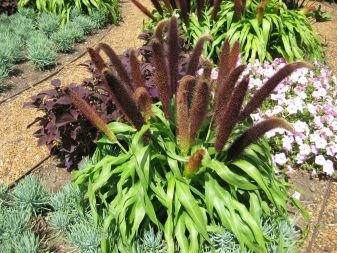
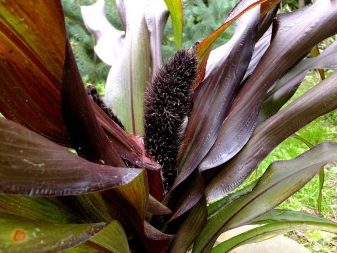
- Shaggy... An East African variety grown as a perennial, the most popular variety, Little Bunny, resembles a hare's tail with downy panicles. Bushes are compact, up to 60 cm tall. At the end of summer, golden panicles appear on the plants. The species is suitable for wintering only in the southern regions.
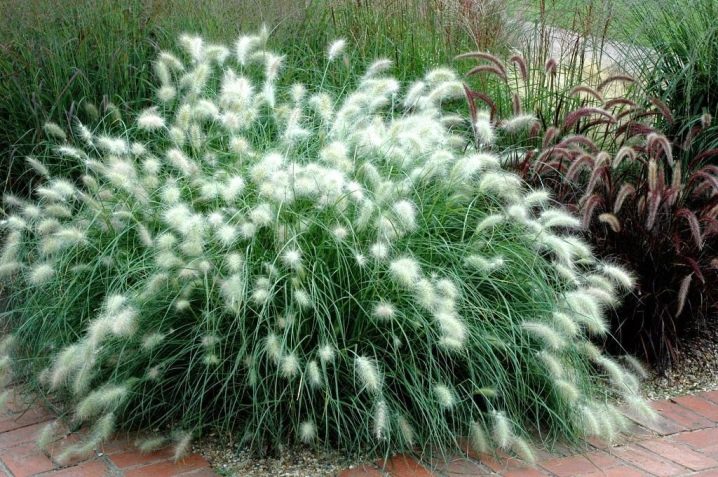
- Foxtail... It is considered the most winter-hardy species. The bush is rounded, widely growing, with leaves yellowing in autumn. Panicles during the flowering period have shades of beige and brown to burgundy.In nature, the plant is common in Australia and East Asia.
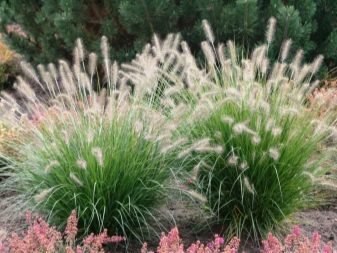
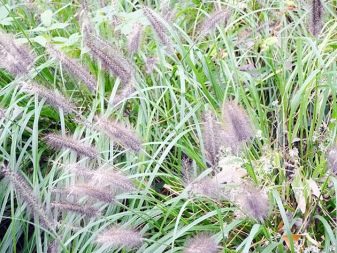
- Oriental... A perennial plant that prefers stony dry soils. It is found naturally in Africa, Asia, in subtropical regions. The height of the bush rarely exceeds 80 cm, the panicles are also quite short, up to 150 mm, painted in a brown-pink tone. Frost resistance is very low, this pennisetum can only be grown in warm climates or covered for the winter in the house.

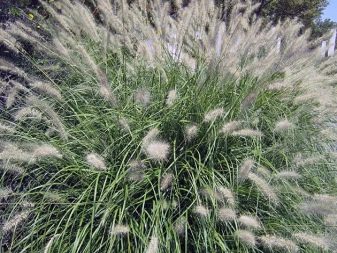
- Simple... Cold-resistant variety, common in China. Prefers mountainous terrain, rocky soils, forms bushes up to 1.2 m high. Inflorescences change color from green to brown-yellow. The root system is prone to active growth, it can harm other plants in the garden.
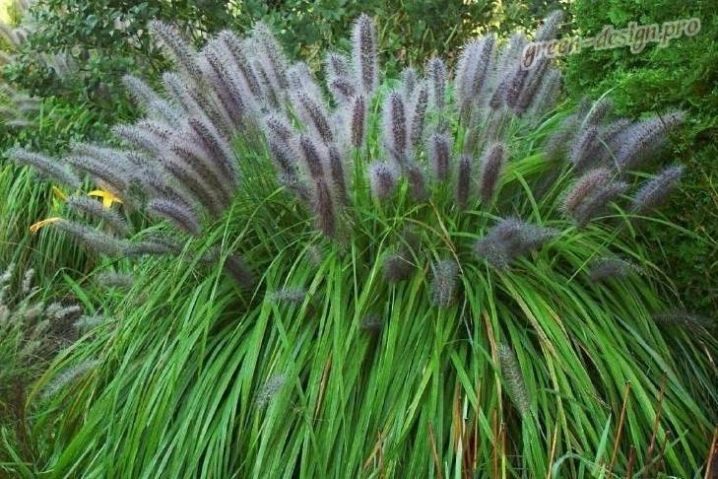
Among the varieties of pennisetum, there are very effective varieties. Rare guests on Russian landscapes can be called "Yaponikum" and "Black Princess", "Vertigo". Where are used more often "Red head" - a miniature plant with lily-type leaves, "Hameln" ("Hameln") with beige inflorescences and a lush leaf rosette. Also in the garden varieties look spectacular Maudri, Black Beauty, Viridescens.
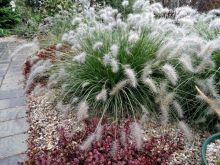
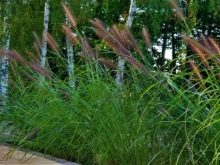
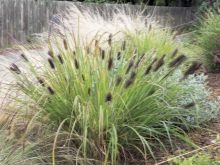
Landing
When growing in seedlings, self-collected or purchased seeds are used. They are not pre-processed. The landing order will be as follows.
- Preparing a container with soil. It should be light, nutritious.
- Moistening of the soil substrate. Warm settled water is used.
- Landing... The seeds are buried in the soil to a depth of 4 mm. Do not sprinkle them heavily.
- Watering... A container with a spray bottle is used.
- Germination... The seed containers are placed in a warm and well-lit place. Seedlings should appear in 7-10 days.
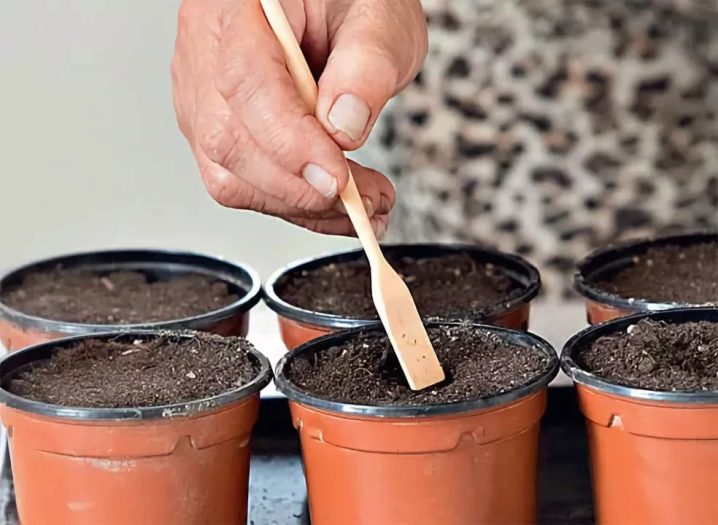
Seedlings are watered as the soil dries up. In case of insufficient lighting intensity, it may be necessary to install phytolamps to obtain stronger and stronger shoots. At the stage of germination, the crops are not covered with a film, their own germination is sufficient for the appearance of the first greenery.
The grown pennisetums are transferred to the garden after hardening for a week. The optimal timing for this depends on the region. This usually occurs in early June or in the 3rd decade of May.
Plants ready for transplanting have a leaf rosette with a height of at least 10 cm.
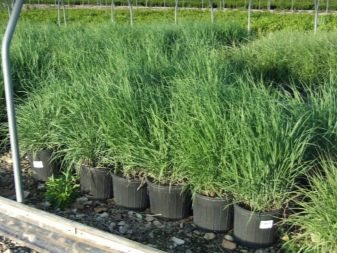
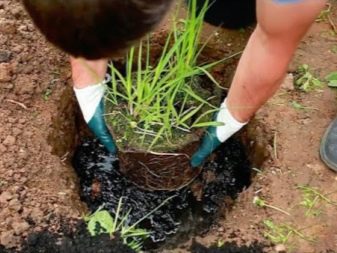
Care
The main care when growing pennisetum is reduced to periodic loosening of the soil, weeding out self-seeding or weeds. In the open field, plants rarely need to be watered and fertilized, especially if the planting was carried out near a reservoir. Fading panicles are cut off so as not to disturb the decorative effect of the composition.
Watering
An adult pennisetum with sufficient rainfall does not need additional watering. In dry periods, the pinnate is moistened regularly, as the top layer of the soil dries up.
In regions with low rainfall, planting of grassy crops is equipped with a sprinkler or drip irrigation system.
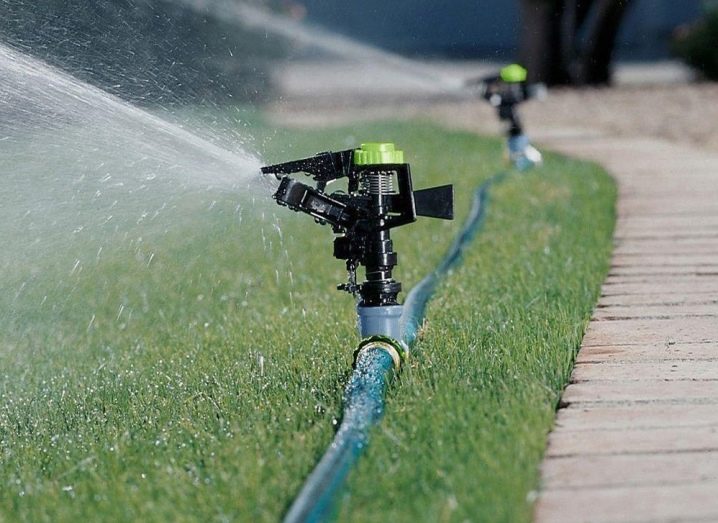
Top dressing
With a sufficiently rich soil composition, pinnate bristles do not need additional nutrients. Poor soils will require more attention. In them, liquid dressings for herbaceous and cereal crops are applied monthly. Over-saturation of the soil with nitrogen should be avoided so that the plants do not turn yellow.
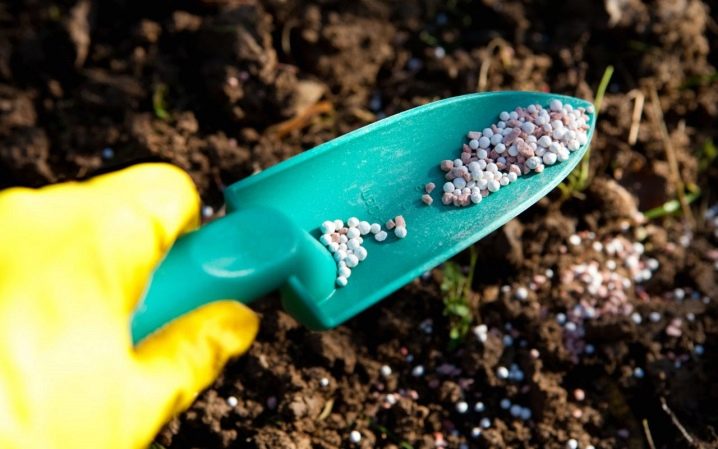
Pruning
This procedure is performed for rejuvenating and healing purposes. It is best to prune in the spring when all dead and dead areas are clearly visible.... In summer and autumn, it is customary to remove only wilted inflorescences, damaged and broken leaves.

Transfer
The pinnate is transferred to the open ground or to a new place with a formed root system, maintaining a distance from neighboring plants in the range of 50-70 cm. The hole is prepared not too deep, a plant with its own earthen clod is placed inside.Then its roots are sprinkled with soil substrate, watered. It is advisable to limit the growth of plantings with special underground barriers made of slate or metal.
Frequent transplantation of pennisetum is harmful, plants react poorly to it. It is better not to resort to such measures unless urgently needed.
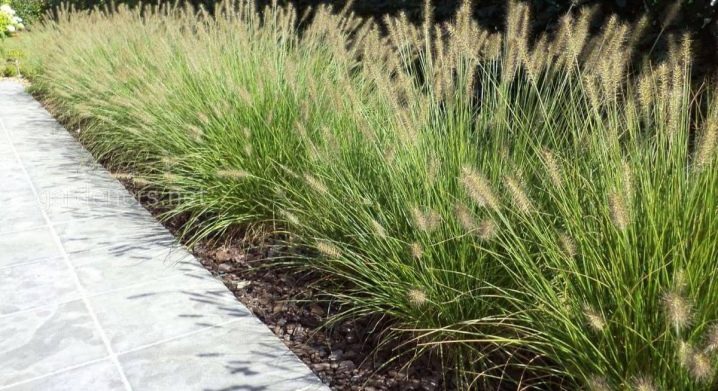
Preparing for winter
Cold-resistant pennisetum varieties require no special preparation. They are left without pruning, the aerial part will provide natural protection for the root system. Varieties that do not have the status of frost-resistant are freed from leaves, then covered with spruce branches or special synthetic material. It is useful to additionally mulch the plant at the base with a thick layer of sawdust.

Reproduction
Pennisetums-perennials are usually propagated by dividing the bush. Repeat the procedure, while rejuvenating the plant, every 5 years, in the spring. The bush is dug in, cut into several lobes, then seated in the prepared holes. The plants are watered abundantly until new roots form.
Annuals are sown as seeds directly into the ground or in pots if the seedling method is chosen. But for perennial plants, this method is also suitable. When sowing in the ground, an open area is prepared, well lit for most of the day. Shadow and drafts are contraindicated in this cereal crop, since they can affect the shape and decorativeness of the inflorescences.
The choice of soil also matters. The best soil is slightly acidic, saturated with humus, moderately moist.
The air should get to the roots freely, without obstacles. Perennial pennisetums are sown early, in mid-February; it is advisable to use peat pots. Annuals - in April, in 2-3 decades.

Diseases and pests
Plants of this genus do not get sick with fungal infections and infections very often. Their immunity is quite enough to protect the bush. The main pests of this plant are aphids, spider mites. To combat them, a simple spraying with a solution of laundry soap is enough. In case of severe infection, chemical insecticides are used.
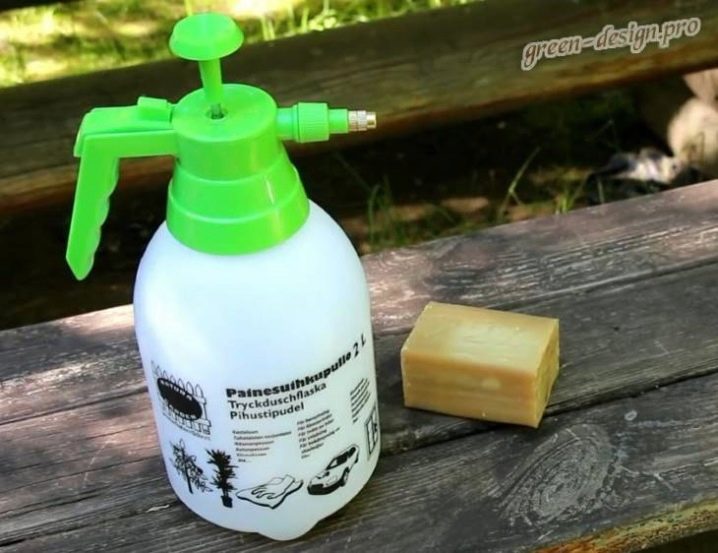
Use in landscape design
Peristotum is a plant that is quite popular when creating landscape landscape compositions. Its decorative species are used as border crops, for framing paths, reservoirs, and the formation of low hedges. The fox-tailed variety successfully coexists with compositions of stones, waterfalls. You can plant a marigold next to it.
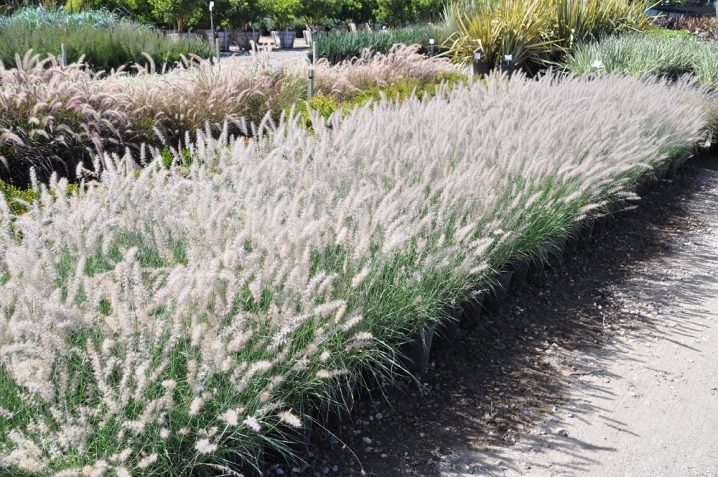
Imitation of the natural landscape when creating alpine slides is also not complete without pennisetum. By combining its different forms, you can get voluminous and beautiful compositions. Their natural appearance does not bring dissonance to the design of the rockery.
The panicles are effectively set off by the luxurious flowering of tea roses. Veronica, catnip, yarrow look good next to them.
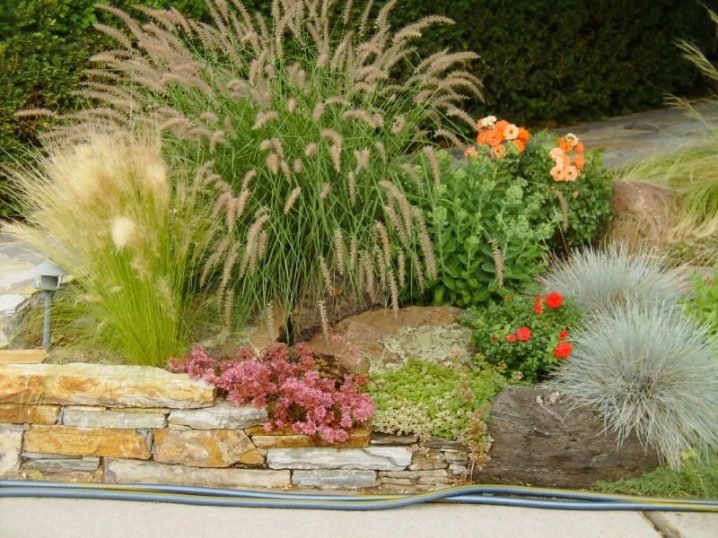
Mono flowers, in which different types of pinnacle are presented, look no less interesting. Here, the main emphasis is on the variety of shapes and shades of inflorescences. Such a framing is in good harmony with the manicured park lawns. Mixed compositions with continuous flowering are also combined with cereals. Pennisetum in them is made a central accent or used as a background for more ornamental plants.
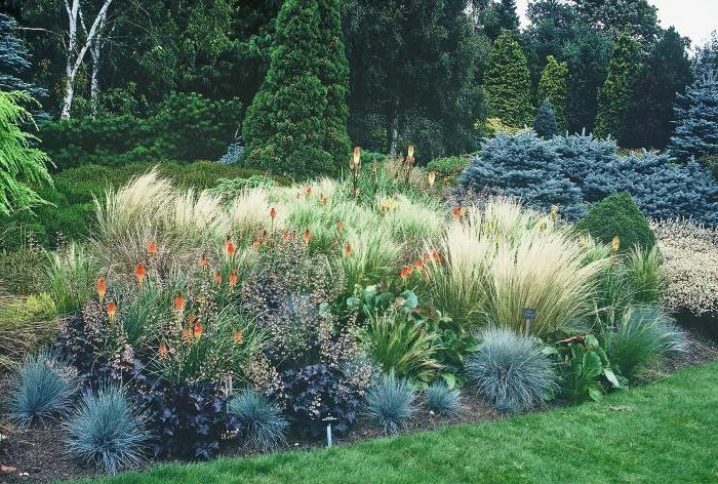
Feel great bushes of pinnacle and when grown in pots, containers. In this case, they are used to decorate the terrace, patio, and for the winter they are taken to the shelter.
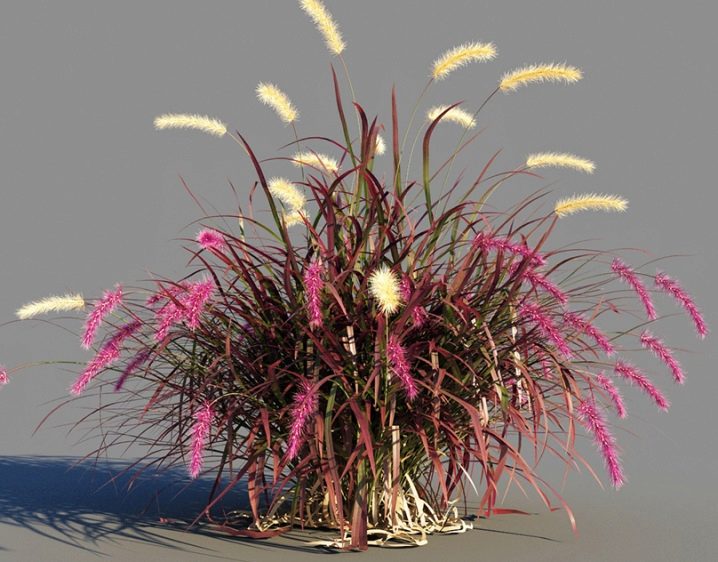



































































The comment was sent successfully.